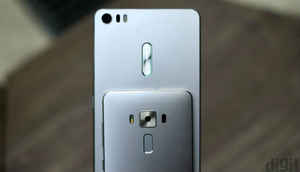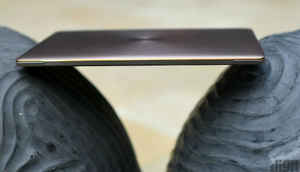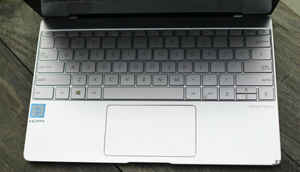
Asus refreshed its smartphone lines in India yesterday, announcing the all new Zenfone 3 range of smartphones. The company kicked things off with four new smartphones, and announced other products that are soon to arrive in India. Here's a brief look on what the Asus Zenfone 3 range looks like.

(L-R) Asus Zenfone 3 Laser, Asus Zenfone 3, Asus Zenfone 3 Deluxe, Asus Zenfone 3 Ultra
Last year's success seems to be fueling Asus' confidence, as the prices this time are much higher. The Zenfone 3 Laser starts at Rs. 17,999, while the Zenfone 3 has two variants, priced at Rs. 21,999 and Rs. 27,999. The Zenfone 3 Deluixe and Ultra both cost Rs. 49,999, with the Snapdragon 821 version of the Deluxe priced at a whopping Rs. 62,999.
Yes, we're thinking what you're thinking. What's with the pricing Asus?

The Asus Zenfone 3 Laser of course has a 13MP Laser AF system. It runs on a Snapdragon 430, the same SoC we just saw on the Xiaomi Redmi 3s Prime. Going by our experience on that device, the price seems extremely high, especially with the LeEco Le 2 and Xiaomi Redmi Note 3 in contention for the consumer's wallet.

Interestingly, the Zenfone 3 Laser looks almost exactly like the Redmi Note 3. The major difference is the square camera module on the back, and the rectangular fingerprint sensor.

The Asus Zenfone 3 is available in 5.2 and 5.5 inch variants, both having 1080p display panels. The two variants will have 3GB RAM, 32GB ROM, and 4GB RAM, 64GB ROM, respectively. They're powered by Qualcomm's Snapdragon 625 SoC, which is an octa-core Cortex A53 SoC, built on the 14nm manufacturing process. The Zenfone 3 has a 16MP camera on the back.

On first look, we don't really like the Zenfone 3's design. The combination of metal and glass hasn't been done very well, and the phone doesn't feel as premium as it should. It also has thick bezels, which make it big and somewhat unweildy.

The Asus Zenfone 3 Deluxe, though, looks and feels much more premium than the Zenfone 3. That said, it's near 50k price tag is again an issue. While the phone does run on the Snapdragon 820 SoC, the phone didn't feel as smooth as an LG G5 or HTC 10, at least on first impressions. In addition, Asus' ZenUI doesn't really go with the polished metallic design, and somewhat disturbs the whole appeal of the smartphone. We would hold our final judgements till we actually review the phone, though.

While the Zenfone 3 Deluxe may still justify its 50k price tag, it's hard to wrap your head around the Snapdragon 821-powered variant. We do appreciate the fact that it has 256GB internal storage, but a 500GB wireless hard drive would cost around Rs. 5,000. Asus is evidently trying to shed its budget phone maker image and go toe-to-toe with Samsung and Apple. Our review shall find out whether it will be successful.

The Zenfone 3 Deluxe also has a 23MP rear camera, with Asus' PixelMaster 3.0 technology. The phone houses Sony's IMX318 sensor, with an f/2.0 Largan lens. On first look, the camera seemed fast enough, although the app launch wasn't quite as snappy as we expected.
Asus has also put a 1080p Super AMOLED display on this device, but the sunlight visibility didn't seem very great. That said, the display also doesn't seem as oversaturated as many AMOLED panels tend to be.

The Asus Zenfone 3 Ultra is the largest of the four smartphones Asus launched. This one has a 6.8 inch FHD display and runs on Qualcomm's Snapdragon 652 SoC. The phone has 4GB of RAM and 64GB storage, combined with a 23MP rear camera.

The reasonability of trying to sell a Snapdragon 652-powered device at nearly 50k was questioned with Sony's Xperia X, and we have to do the same with Asus as well. It's hard to see how the Zenfone 3 Ultra will turn things around when we review it, but we've come to expect a lot from Asus' devices, thanks to its promising Zenfone 2 smartphones from last year.

The much talked about Asus Zenbook 3 is also going to make an appearance in India very soon. The Zenbook 3 takes its place in the ultrabook market, with Intel's Core i7 processor and a thin, but pretty chassis. The Zenbook 3 weighs just under a kilogram and is a mere 11.9mm thick. Asus' concentric ring design and all those numbers do make it look exceedingly premium.

The Zenbook 3 is also quite small, making it easy to carry around. Asus says the use of a new aerospace grade aluminium allow is what allows this laptop to be so light, yet sturdy. On first impressions, it's very hard to disagree with Asus' claims.

The keyboard on the Zenbook 3 didn't feel very good, though. We've recently seen HP's handiwork with keyboards on such ultrabooks, and the key travel didn't seem very good on Asus' Zenbook 3. Intensive usage, though, should reveal deeper insights.

We are yet to unearth more facts about the Asus Zenbook 3. The commotion at the launch event left us with little chance to form an opinion. You can rest assured there'll be more after the review, though.